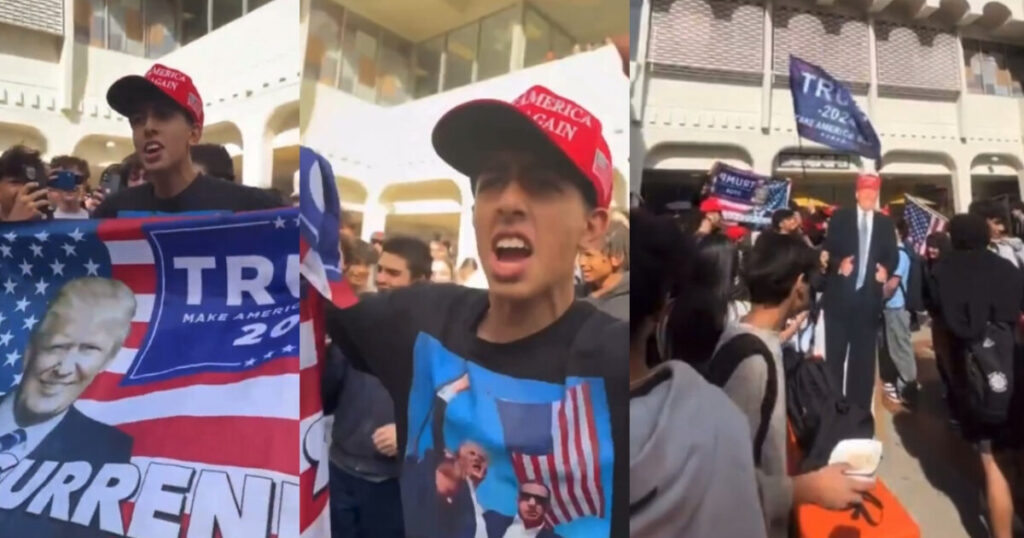At Beverly Hills High School in Los Angeles, a significant reaction occurred among students following Donald Trump’s election victory. In an email communication to parents, Principal Drew Stewart announced restrictions on student gatherings, including prohibitions against jumping and shouting, citing that recent instances of student political expression had contributed to an unsafe atmosphere for some students. Many felt that these demonstrations created a sense of unease among their peers, prompting a decision to limit the collective expressions of political support or dissent.
Despite the administration’s attempt to maintain order, the announcement sparked a large, spirited protest among students who gathered to express their support for Trump. This demonstration featured students waving Trump flags and wearing pro-Trump apparel. The atmosphere of the protest was electric, with even some staff members, including a security guard, joining in on the enthusiasm by raising a Trump flag. The convergence of students served as a statement against the school’s restrictions, highlighting the fervent political sentiments of the youth in this contentious time.
In the principal’s email, Stewart expressed that while students are permitted to practice their political rights individually, the collective nature of recent assemblies disrupted normal school activities. He addressed the perceived safety concerns raised by these gatherings, indicating that the school’s primary aim was to foster a supportive and safe learning environment. The administration’s efforts to handle these situations delicately underscored the often-complicated dynamics facing schools amid heightened political discourse among students.
Los Angeles Unified Superintendent Michael Bregy also chimed in on the matter, reinforcing the need for balance between free expression and maintaining a conducive educational atmosphere. He acknowledged that the student demonstrations were being monitored to prevent any escalation into disruptive behavior that could compromise safety. Bregy’s comments reflect the broader challenges faced by educational institutions as they navigate the complexities of student activism while ensuring that the rights of all students are respected and protected.
As the political climate increasingly infiltrates school environments, administrators find themselves in a difficult position of managing both student freedoms and the potential unrest that can arise from such expressions. The decision to impose restrictions, despite being aimed at safety, drew criticism from several quarters, including students who felt that their rights to assembly and expression were being curtailed unnecessarily. Some commentators pointed to the administration’s actions as overly cautious or indicative of an attempt to suppress particular political expressions, setting off a broader debate about the role of schools in political discourse.
Overall, this incident at Beverly Hills High School illustrates the ongoing tension between student engagement in political issues and the responsibilities of school administrations to provide a safe learning environment. The response from students in support of Trump reflects not only their political inclinations but also a broader desire to assert their rights in an environment where they feel increasingly restricted. This scenario serves as a microcosm of larger societal debates about free expression and the limits of political engagement within educational settings, raising essential questions about the implications of such policies on the developmental experiences of students.

